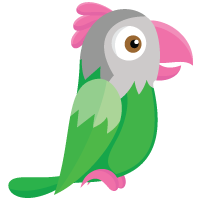Creating and managing tabs
[Desktop]
Having access to information when you're answering a chat can make the difference between a good chat and a great one.
Tabs help agents sort information and access additional functions without having to exit the Dashboard. Keeping your workflow all in one place means you can be more efficient while answering a chat and save time for other things.
NOTE: The instructions below can only be completed from a browser or the tawk.to desktop apps. They cannot be completed in the tawk.to mobile app.
Here’s how to make changes to an existing tab or create a new one from scratch:
If you have multiple properties, select the correct property.

Click Administration in the left navigation bar.

Click Tabs under Settings in the left submenu.

On the Tabs page, you'll see a list of all the current Tabs available to agents when answering chats for the currently selected property under the My Tabs heading. The Details, Knowledge Base, Shortcuts and History Tabs are all available by default and offer a quick look at what a tab can be used for.

The Details tab shows data for the current chat. Some details are automatically included, such as the visitor's IP address and operating system. Other information can be entered by agents or added with a Pre-Chat Form, such as the visitor's name and email address.
The Knowledge Base and Shortcuts tabs offer another quick way for agents to access both of these features. Agents can see a complete list of all your Shortcuts or sift through the Knowledge Base to find answers to an incoming question.
The History tab displays a record of past chats. You can choose to view either chats with your current visitor or all chats on your property. If an agent can see this isn't the first time the visitor has entered a chat, they can quickly read through the previous chats to review the last conversations or jump to a past chat with a similar situation for a hint on how to answer the visitor's questions.
The Details, Knowledge Base, Shortcuts and History tabs can't be edited, but they can be deleted or disabled. To make changes to an existing tab, hover over it in the list and you'll see options pop up for deleting or disabling the tab. If it's a custom tab, you'll also see a pencil icon you can click to edit your tab.

The Preview function on the right side of the Tabs page gives you a quick glimpse of what an agent will see when viewing a Tab while answering a chat. You can cycle through the different Tabs by clicking the symbols for each at the top of the window.

To create a new tab, click the green + Add Tab button in the top right corner and choose from one of the four options that appear.

+ URL
Adding a URL tab allows you to embed a website within the tab. You just need to give the Tab a name and enter the URL.

This tab can be used as a handy way for agents to reach pages they commonly refer to. Create a URL tab for any commonly visited web pages, giving your agents quick and easy access right there in the chat. You can even include a tab for forms, booking systems or Google docs.
+ Text
This tab is helpful for making sure agents answering chats have access to the specific information they need. You can outline policies, provide answers to commonly asked questions or create guides for agents to follow.

+ Menu
A menu tab acts purely as a way to organize your other tabs. Within a menu tab, you can list Text and URL tabs, so users can easily navigate by clicking on the tab within a chat. If you're worried about taking up a lot of space with multiple custom tabs, menu tabs help to keep the clutter to a minimum.

+Chat
Select +Chat to add Direct Messages and Group Chats. Each allows you to speak with your team while chatting to a visitor without even changing windows.
Now you just have to give the tab a name, choose either Groups or Direct Messages and select a group or property member from the drop-down box. Once you've selected the chat you want to add to the tab, select the green Add Tab button and you're ready to go.

You can also assign an icon to represent any Text, URL, or Menu tab by clicking on the image next to the Tab name text box.

This will open a new window and allow you to choose an icon from the list of available symbols.

Need help creating and managing tabs? Reach out to our support team or schedule a call.
